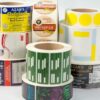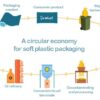Honeycomb Packaging: The Eco-Friendly Solution for Modern Shipping Needs
As businesses increasingly prioritise sustainability, honeycomb packaging products are becoming a top choice for eco-conscious shipping solutions. These products, often made from recycled and recyclable materials, offer a balance of environmental responsibility, durability, and protection for shipped goods. The honeycomb structure, inspired by nature, provides excellent shock-absorption capabilities, cushioning items during transit while maintaining a lightweight design that helps reduce shipping costs.
The Benefits of Honeycomb Packaging
Honeycomb packaging stands out for its unique design, which mimics the natural strength and efficiency of a honeycomb structure. This hexagonal pattern distributes weight evenly and offers superior resistance to impact, making it ideal for protecting fragile or sensitive items. The benefits of honeycomb packaging extend beyond its protective qualities:
- Sustainability: Honeycomb packaging products are often crafted from renewable resources, like recycled paper, making them fully recyclable and compostable at the end of their lifecycle. They provide an alternative to plastic-based materials, reducing environmental impact.
- Cost Efficiency: Honeycomb packaging’s lightweight nature reduces shipping costs, as carriers typically charge based on weight. Additionally, its shock-absorbing properties eliminate the need for excessive padding, like bubble wrap or foam inserts, further cutting material costs.
- Versatility: These packaging products are available in a variety of forms, from mailers to interior packaging. They can be customised to suit different sizes and shapes of goods, providing flexibility for businesses across various industries, including e-commerce, electronics, and retail.
- Self-Sealing and Easy to Use: Many honeycomb mailers come equipped with self-sealing adhesives, allowing for quick and efficient packing without the need for additional tapes or seals. This feature is particularly beneficial for businesses with high shipping volumes, as it speeds up the packaging process.
- Branding Opportunities: Honeycomb packaging products can often be customised with company logos, colours, and messages, creating a cohesive brand experience for customers. This adds an extra layer of professionalism and strengthens brand identity, particularly for businesses focusing on sustainable practices.
Applications of Honeycomb Packaging
Honeycomb packaging is not just limited to padded mailers. It has wide applications, including:
- Padded Envelopes: These are ideal for small, fragile items such as electronics, cosmetics, or small accessories. The honeycomb structure ensures that the item remains protected during transit without adding excess weight.
- Inner Packaging: Honeycomb pads or partitions can be used inside boxes to cushion items, especially in cases where multiple products are being shipped together. This type of packaging provides excellent shock absorption and ensures that items do not move around during shipping.
- Honeycomb Panels: In larger shipments or industrial applications, honeycomb panels are used for creating strong, lightweight boxes or crates. These panels provide a solid, durable option for shipping heavier items while still maintaining sustainability.
The Future of Eco-Friendly Packaging
As consumers become more environmentally conscious, the demand for sustainable packaging solutions continues to rise. Honeycomb packaging products meet this demand, offering not only protection and cost savings but also contributing to a company’s sustainability goals. By choosing honeycomb packaging, businesses can reduce their environmental footprint while ensuring that their products reach customers safely and securely.
Honeycomb packaging, with its innovative structure and eco-friendly credentials, is well-positioned to become a staple in the shipping industry, providing a win-win solution for both businesses and the planet. As technology and materials evolve, we can expect even more innovations in this space, further enhancing the durability and sustainability of packaging products.










